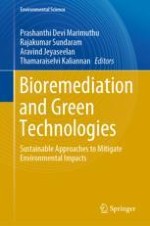2021 | OriginalPaper | Chapter
Optimization of Culture Conditions for Enhanced Decolorization of Azo Dyes by Aspergillus flavus Isolated from Dye Contaminated Soil
Authors : M. Dexilin, B. Gowri Manogari, Thamaraiselvi Kaliannan
Published in: Bioremediation and Green Technologies
Publisher: Springer International Publishing
Activate our intelligent search to find suitable subject content or patents.
Select sections of text to find matching patents with Artificial Intelligence. powered by
Select sections of text to find additional relevant content using AI-assisted search. powered by
